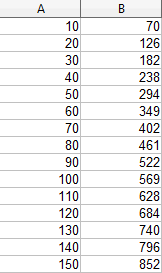megasupermagnum
45 Cal.
I just wanted to share some real world data on what my lead shot with my adjustable powder measure throws for shot weight. I used an adjustable brass powder measure from TOTW. I first tested powder, and got reasonably close results. I won't go into detail, but set to 100, my measure threw an average of 98 grains of Fg Goex, and 98 grains of FFg Goex. I reset the measure, and got very close results again. I then threw 5 charges of lead shot at each setting from 70 to 120, to get an average of each. I used #5 Lawrence magnum shot. Chilled shot is likely the measure higher weight, and same with smaller shot sizes. I then put that data into a scatter graph and got an average line, to simulate results from 10 all the way to 150 settings on my measure. Results were nothing too surprising, and are close enough to what other people have reported. 70 through 120 are actual recorded numbers, anything else was calculated on a graph. Column A is the measure setting, column B is the shot weight in grains.

As you can see, they all seem to end up right between 1/8 oz increments. For example, set on 80, it ends up almost dead center between 1 ounce and 1 1/8 ounces. Hopefully this helps someone's curiosity.

As you can see, they all seem to end up right between 1/8 oz increments. For example, set on 80, it ends up almost dead center between 1 ounce and 1 1/8 ounces. Hopefully this helps someone's curiosity.




